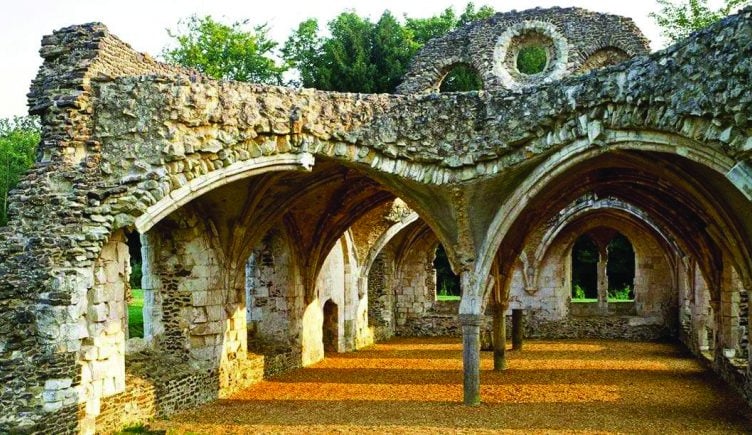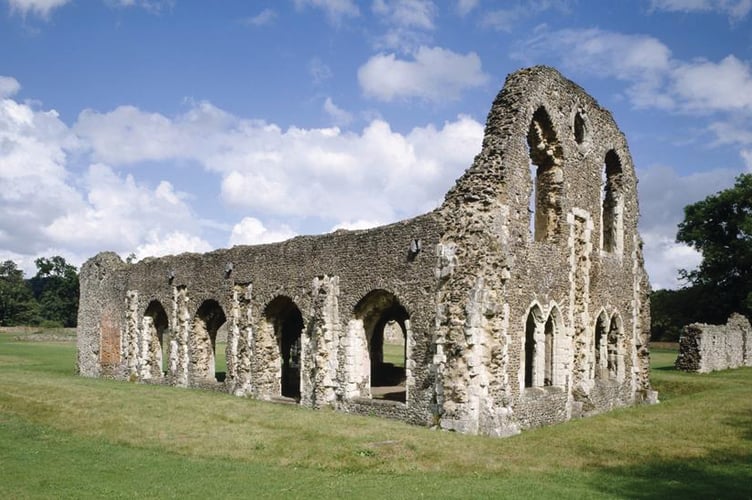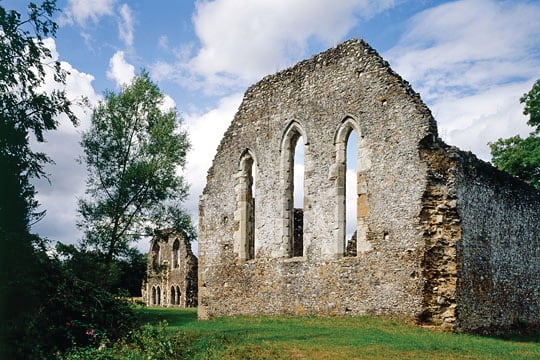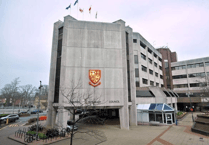TUCKED away within a peaceful loop of the River Wey near Farnham are the ruins of Waverley Abbey, where you can still enjoy the solitude experienced by the monks who founded a monastery here almost 900 years ago.
In recent times the abbey ruins have been used as a backdrop to several films and TV series, including Hot Fuzz, The Mummy, Howards End and Disney’s Into the Woods. The ruins are managed by English Heritage and are free to visit.
Founded in 1128 by William Gifford, Bishop of Winchester, Waverley Abbey was the first Cistercian monastery in Britain. The original abbey was rebuilt on a much larger scale from the late 12th century into the 16th century.
Together with its grounds and outbuildings the monastery covered an area of about 24 hectares (50 acres) – more than the visible ruins suggest – bordered to the south and east by the River Wey. (For a fascinating pictorial view, search online for “Waverley Abbey Reconstruction”.)

It opened with 12 monks and an abbot from Aumone in France. Waverley soon became the springboard for Cistercian settlement in southern England.
By 1187 there were 70 monks and 120 lay brothers who all farmed the surrounding land, were active in the Cistercian wool trade and provided shelter for pilgrims and travellers and an infirmary for the sick.
In 1536, with the Dissolution of the Monasteries, the site passed to Sir William Fitzherbert, treasurer of the king’s household. Much of the abbey was dismantled and some of the stone was reused to build Sir William More’s house at Loseley, a few miles to the east.

It’s likely the stone was also reused in Waverley Abbey House, which was built in 1723 in the northern portion of the former abbey precinct.
Although only parts of the buildings remain standing today, archaeological excavation has recovered the complete ground plan. Waverley followed the traditional plan of a Cistercian abbey. It featured a large church, almost 91 metres (300 feet) in length.
To the south of the church was the chapter house, where the monks would gather daily to have a chapter of the rule of the order read to them and to discuss business. Further south was the monks’ dormitory. The refectory and toilet block lay south of the cloister and the lay brothers’ accommodation was situated to the west.
The most impressive ruin visible today is that of the lay brothers’ quarters, at the far end of the site. The long cellar has graceful columns supporting the vaulting above. Parts of the upper floor and the south wall remain standing.

An end wall and parts of the side walls of the monks’ dormitory are visible up to the full height of the gable. To the north are substantial remains of the chapter house and the south transept of the church, as well as traces of the north transept. An isolated stretch of wall to the east of the church is part of the abbey’s infirmary chapel.
In the eastern part of the precinct are earthwork remains of a water supply system and the fishponds which provided one of the staples of the monks’ diet.
Access is via a car park off Waverley Road (the B3001) near Farnham. Satnav users can locate it using the post code GU9 8EP. The ruins are 350 metres from the car park across a field with uneven turf in which cattle may be grazing.
English Heritage’s website includes a summary of the Abbey’s history. You can also download a fascinating site plan showing all the Abbey’s known monastic buildings. Just visit www.english-heritage.org.uk and search “Waverley Abbey”, then click on “History”. For a more detailed history, see the Waverley Abbey entry on Wikipedia.




